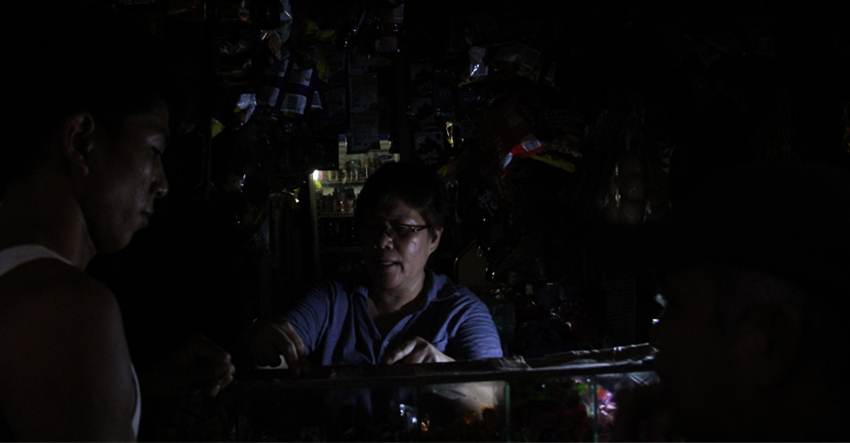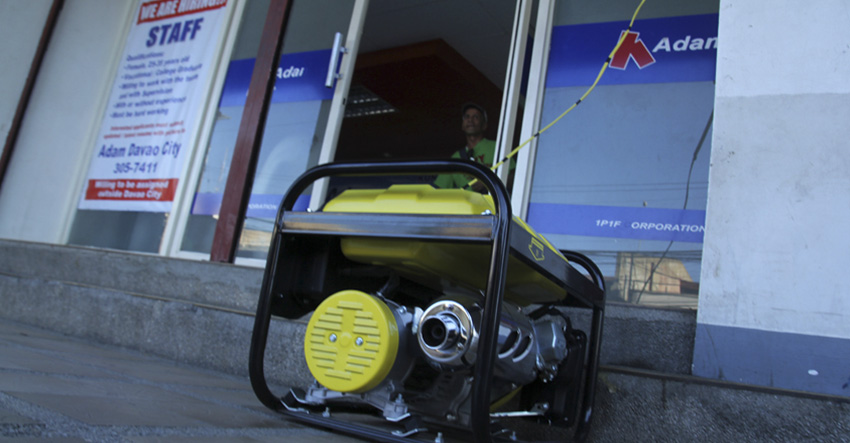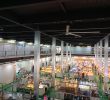
With the help of flashlights, it’s business as usual for store owner Leo Garcia amid the recurring outages in Davao City. (Ace R. Morandante/davaotoday.com file photo)
DAVAO CITY – Residents here expressed dismay with the increase in their electric bills despite the five-hour power interruptions implemented by the Davao Light and Power Company (DLPC).
Alexandria Hao, a resident of Barangay Obrero said her bill went up by P1,200 this month.
“What upsets me is that my kilowatt hour consumption has increased! How can our consumption increase when we cannot consume power because of the brownout?” she said.
Ella Evangelista, from Marfori Heights, lamented that their monthly average bill of P6,500 a month increased to almost P9,000.
“We suffer from 4-8 hours of no electricity and yet I get this in return,” said Evangelista.
But aside from the additional expenses brought by the higher electric bill, the power interruptions also took toll on their family’s expenses.

ALTERNATIVE ENERGY. Due to the prolonged outages in Davao City, business establishments use their own diesel generator sets.
(Ace R. Morandante/davaotoday.com)
Evangelista said she needed to buy rechargeable fans and lights. As they often could not stand the heat, she would take her kid out of the house instead.
Hao said even with the schedule of the power interruptions implemented by the DLPC, one has to allot about four hours to prepare for a two-hour power interruption.
“If they say two hours brown-out you actually have to allot about 4 hours. Say schedule is 8:00 to 10:00, any time within that time frame. Because they can turn off the power. If they turn it off at 8:00 then I will get my electricity back by 10:00 but if power interruption is at 9:30 then it means power will be back at 11:30,” she said.
The Davao Light justified the increased electricity bills with higher power rate from using the costlier power source from coal-fired power plant and bunker fuel.
Costly bunker fuel and coal plant
Early this year, the Aboitiz-owned Davao Light announced a positive outlook for power consumption when Therma South Inc. (TSI), a fully-owned subsidiary of Aboitiz Power Corporation inaugurated on January 8 the 300-megawatt (MW) baseload coal-fired power plant located between the boundaries of Davao City, Sta. Cruz, and Davao del Sur provinces.
At that time, Milan reportedly said that with the entry of the coal-fired power plant, Davao Light lowered down its contracted demand with National Power Corporation (NPC)- Power Sector Assets and Liabilities Management Corporation (PSALM) from 274MW of last year to about 140 MW starting January this year.
Yet, the alternative power supply comes with a higher price.
In a telephone interview with Davao Today on Tuesday, April 19, DLPC Executive Vice President and Chief Operating Officer Arturo Milan, said the higher power rate came from the more expensive coal plant and bunker fuel used.
“Hydroelectric power plant is cheaper with P3 per kilowatt hour. And it has no value added tax because it’s renewable,” said Milan.
He said bunker fuel which is used to run other sources like the Bajada Power Plant costs P4 to P4.60 and coal plant costs P4.60 to P5.20. It also has VAT.
Because of the drought affecting the hydro power plants “we use more bunker (fuel) and coal and the impact on that is we also paid higher VAT,” Milan said.
Milan said they wanted to “balance our use of energy with the power rate.” However, he said because of the situation they are forced to contract power from coal and bunker fuel.
‘Privatize power is the reason’
But for Bayan Muna Representative Neri Colmenares this is the situation because of the privatized power industry.
“Because its private, they will not build more plants to keep the demand high and the supply low and they can impose higher rates and the people will not complain much because the energy supply is insufficient,” Colmenares told Davao Today.
Colmenares also said even with the low fuel price for a long time in the world market, it did not equate to a lower electricity rates.
“And now if there is a slight increase in fuel price, they would say that the price of electricity will also increase. So I don’t find that explanation acceptable,” he said.
Colmenares said the only way to stabilize the supply and demand of power is to junk the Electric Power Industry Reform Act of 2001 (EPIRA) and the government should build its own plants, which focus on renewable sources.
EPIRA is designed to bring down electricity rates and to improve the delivery of power supply to end-users by encouraging greater competition and efficiency in the electricity industry, according to the Department of Energy.
But for Bayan Muna Epira is the reason why the energy industry is privatized.
Colmenares said the government should ensure that there is a continuous supply of energy and the rates should go down.
“So if the solution is just have power, but the rates remain high, the consumers will continue to suffer,” he said.
Improvement?
On Monday, April 18, the DLPC said there is an improvement with the power supply after one of the units of the TSI went back online on Sunday, April 17.
Milan during the interview, said they have recorded 6.8 hours of power interruption as the longest interruption recorded since they started implementing the maximum of five-hour brownout.
On April 13, DLPC implemented a new rationing system to its franchise, which increased from a maximum of two hours to a maximum of five hours.
DLPC has an average supply 190 megawatts, but average demand exceeds to 340 MW.
It said the duration of the rotating power outages in its franchise would now be decreased from five hours to two to three hours.(davaotoday.com)










